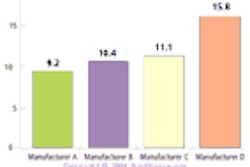Centralized scheduling offers numerous benefits for the multisite radiology practice. To name a few, it provides a single database of scheduled work activity for a group, is more convenient for patients and their referring physicians, and improves operational efficiency while reducing costs.
But if the processes aren't laid out clearly before the service is implemented, the technology will be anything but a silver bullet for solving a practice's operational woes.
"The technology supporting centralization cannot overcome poor operational processes," said Patricia Kroken, president of Albuquerque, NM-based Healthcare Resource Providers. "Failure to address existing processes and their limitations can result in project failure -- or at least underperformance."
Kroken, a past president of the Radiology Business Management Association (RBMA) and a healthcare business consultant, shared her expertise in scheduling process efficiencies during an American Healthcare Radiology Administrators (AHRA) teleconference earlier this month.
Software
Centralized scheduling requires a combination of technology and business process. On the technology side, Kroken outlined basic requirements of a scheduling application.
The capability for flexible time slots is critical, according to Kroken. These need to encompass the modalities and the varying lengths of time for particular studies and preps. Time slots need to reflect that not all radiologists in a practice perform the same procedures, and thus they need elasticity in their scheduling.
Technologists who work on multiple modalities or in different locations in a workday need to be accounted for. Equipment maintenance, quality assurance, and repairs will be a factor. And the application should be capable of providing combination scheduling such as a mammography procedure and an ultrasound.
Falling into the "desirable" category is software that can search for the next available time slot for a particular procedure. Also, the ability to integrate with billing or other modules of a practice's RIS can reduce or eliminate duplicate data entry processes, said Kroken.
If a practice uses film, automated film tracking processes should be part of the application. HIPAA security features, such as access controls and secure storage of data, must be a part of all scheduling software. The capability for scheduling options for patients and referring physicians -- such as permitting online scheduling or requesting particular time slots -- should be considered.
Management reporting features of a scheduling application should be examined as well, Kroken said.
These may include productivity reports on staffing, equipment, and workflow. In addition, reporting and analysis tools on referring physician activity provide data for marketing efforts, modality trends provide staffing and equipment use data, payor activity will show areas for operational improvement, and denials and adjustments data provide key metrics for financial management, she said.
Process planning
Before implementing a centralized scheduling system, Kroken advocates the creation of a multidisciplinary team to tackle the planning process. At a minimum, this should include a representative from billing, imaging center operations, a senior technologist, a film library manager, and a radiologist.
"You want to look for people who can cover all the 'Yes, but…' issues of the practice," she said.
The team must first identify the complexities of a multisite, multimodality practice, and present the problems that need to be solved. The group should also be capable of identifying and providing solutions for potential problems that do not currently exist, Kroken said.
As a baseline, she identified six areas for consistency or variance consideration for each site in a practice:
- Hours of operation
- Days of operation
- Modalities on site
- Screening versus diagnostic studies performed at each site
- Radiologists
- Equipment such as RIS, PACS, and general or specialized radiology equipment
Workflow documentation is the next step in the planning process. The scheduling process and how it occurs for each site needs to be reviewed. Kroken suggested diagramming each step of the workflow to create an overall map of how physician orders are received, how patient preps are communicated, and how the amount of time per procedure type is determined at each center.
In addition, the planning team needs to look at how current schedules are physically maintained at each site, what documentation exists to support schedulers at each site, and staffing impacts on each site as a result of centralization, said Kroken. For imaging center practices that store film at multiple locations, the workflow analysis should consider consolidating it at a single site. However, this step brings up issues of its own.
"If films exist at more than one site, what is the most logical way to consolidate them? Do you create a new or revised catalog system? Do you pull at the films forward to form a new record? How is a film jacket tracked to its original site and number? These are questions that will need to be answered," she said.
The team will also need to develop and establish scheduling protocols, Kroken said. These include screening and diagnostic mammography time slots, studies with and without contrast, patient prep instructions, and variations for radiologists and other professional personnel.
"Meticulous planning at this stage means fewer problems later," she said.
Kroken strongly advocates that the planning team document each process decision, as well as the steps it took to arrive at the decision. This should encompass the current process problems identified by the group, the decisions taken to solve those problems, and the anticipated process changes from centralization.
Anticipated process changes need to undergo the same scrutiny of workflow diagramming through each step of a scheduling operation that current processes underwent earlier in the planning process. These maps will then be compared to current workflow maps to see where they differ and where they concur. This will allow the team to identify where problems are most likely to occur in the new process map, Kroken said.
A HIPAA security and privacy analysis will need to be conducted and documented for the processes. A risk assessment and disaster and contingency plan will also need to be created.
Communication with stakeholders in the practice is key, as is feedback to and from those who will be impacted by the new centralization. Staff members who voice resistance to the new system -- rather than being viewed as a roadblock --should be included in the process.
"Make the gripers part of the solution process," Kroken suggested.
Backup processes will need to be created in case of a partial or catastrophic scheduling system failure. Staff will have to be trained on these processes as part of the centralization rollout, and they will need to be reviewed or modified on a predetermined basis.
The implementation plan should include timelines for the transition and rollout, clearly defined responsibilities, and checklists and monitoring to ensure that service levels are maintained during the transition.
Above all else, noted Kroken, establish realistic expectations and ensure adequate time for planning the centralized scheduling migration with the practice's radiologists.
"They will not get what they want if you do not have sufficient time," she said.
By Jonathan S. BatchelorAuntMinnie.com staff writer
June 25, 2004
Related Reading
Healthcare IT, practice automation crucial for meeting rising costs, May 20, 2004
Electronic exam ordering offers pros, cons in PACS, January 6, 2004
Workflow analysis can ease scheduling woes, November 28, 2003
RIS/PACS integration brings productivity, efficiency gains, July 22, 2003
Online scheduling improves satisfaction, July 3, 2003
Copyright © 2004 AuntMinnie.com



















